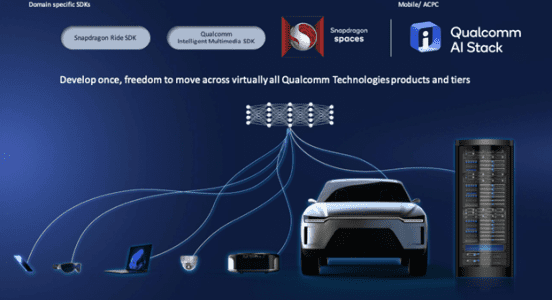The amount and pace of technological change is rapidly reshaping the world we live in, and the tomorrow we inherit. Just like many other emerging technologies, the ‘metaverse’ as a concept is still being defined and re-defined. That said, it is undisputedly clear that the metaverse will be a major digital disruptor, and it is already here.
When we look at the metaverse, we mostly talk in terms of its consumer use cases. How about the ‘enterprise metaverse’? What is it all about? What are the potential metaverse enterprise use cases?
I recently spoke with Hendrik Witt, Chief Product Officer, TeamViewer, who has a ringside view on the rise of Metaverse, and had a free-wheeling conversation around the various facets of enterprise Metaverse.
Prabhu: How do you define the ‘Metaverse’?
Hendrick: The mainstream debate of the “Metaverse” often centers around the “Consumer Metaverse” – a 3D social virtual reality with gaming and lifestyle elements. Instead, looking at a broader understanding of the “Metaverse”, it can vastly be defined as a result of the continuous convergence between the physical world, the Internet and technology in general. It encompasses various marketplaces and an extensive ecosystem of technologies, products, and services.
Prabhu: There is so much talk around the consumer-facing metaverse applications. How about the enterprise metaverse?
Hendrick: At TeamViewer, we believe that we already today offer relevant Augmented Reality (AR) and Mixed Reality (MR) based enterprise solutions that can be understood as part of the Industrial Metaverse. We are convinced that – despite the mainstream understanding of the metaverse as a VR-based lifestyle and entertainment concept – the industry will be one of the key drivers in adopting and driving the new technologies on the path to the metaverse.
For TeamViewer, it is important to underline that the “Metaverse” is not a hypothetical construct of a potential future. TeamViewer, already today, offer software solutions for very concrete business use cases to improve and optimize frontline work processes for companies across all industries. Our solutions drive digital transformation across all verticals and create real value for companies and their employees and customers. Against this backdrop, TeamViewer sees itself as a major driver of the Enterprise/Industrial Metaverse with several tangible use cases. One example is TeamViewer’s usage in training / onboarding scenarios in the automotive industry. Using TeamViewer Frontline, new employees learn how to inspect, maintain, repair cars, seeing a 3D hologram with instructions on top of the real car by using mixed reality glasses like Microsoft HoloLens and TeamViewer’s spatial capability within the platform.
Prabhu: What is the technology stack enabling enterprise metaverse?
Hendrick: The concept of the metaverse is enabled by a broad number of evolving trends and technologies, including networking and connectivity, AI, AR Cloud, blockchain, edge computing, IoT and MR/VR. The convergence of these technologies will facilitate the delivery of mature metaverse solutions. It is exciting to see which technologies, devices and interfaces will prevail or emerge along the way. For instance, TeamViewer is in close contact with all leading manufacturers of smart glasses to realize the interception of technology for developing solutions.
Prabhu: From TeamViewer perspective, how do you look at the opportunities over the short, and the long-term?
Hendrick: For us, when looking at new technologies, it is important that we create added value for customers, with real, measurable results. This also applies to the Metaverse. Together with our partners and customers, we are constantly developing our products and explore the opportunities around the Industrial Metaverse.
Over the last three years, TeamViewer has invested significantly in the area of Augmented Reality (AR), especially for enterprise use cases. TeamViewer now offers a leading AR platform that runs on smart glasses as well as smartphones, tablets, and wearables and that offers a comprehensive set of capabilities around Augmented and Mixed Reality – from simple AR annotations and markers to 2D overlays to complex 3D holograms. Recently, TeamViewer has even introduced AI capabilities that can be combined with AR workflows. Consequently, TeamViewer already has been part of the Metaverse for quite some time, but without labelling it this way.
Prabhu: From a TeamViewer perspective, what are some industry-specific use-cases that you enable in enterprise Metaverse?
Hendrick:
- TeamViewer’s efforts to support Frontline workers with advanced technologies like AR/VR
TeamViewer Frontline is a fully integrated augmented reality solution. The solution improves manual work processes across industries based on the latest wearable computing technologies. Frontline is designed to consciously empower the human worker in an increasingly digitized working environment and increase productivity.
For instance, Frontline enabled Coca Cola HBC in process optimization with the use of smart glasses and remote assistance solutions to improve picking quality and pallet packing accuracy in the warehouse. As a result, after two months of implementing the vision picking solution, the picking performance increased by approximately six to eight percent, with an accuracy of ninety nine percent.
- TeamViewer’s tools enabling smart analytics for logistics efficiency
Our latest add-on to Frontline is called AiStudio. The combination of AR and AI creates opportunities for all industries and support use cases along the entire value chain including logistics. As one example, the AI can be trained to automatically verify if the correct items are picked in warehouse picking processes. Other use cases besides process verification encompass compliance checks or quality assurance.
Another example of how TeamViewer makes logistics processes more efficient is the integration of TeamViewer Frontline into SAP’s Extended Warehouse Management system. This enables companies to further enhance their logistics processes with AR-based vision picking. Workers receive step-by-step instructions directly in their line of sight on smart glasses and wearable devices guiding them through their task while working hands-free. New data insights are passed back to the SAP EWM application in real-time to enable continual process validation and optimization.
- How AiStudio enables all customers to easily add AI capabilities to their day-to-day operations and improve their processes through automated verification?
AiStudio is a fully integrated Artificial Intelligence (AI) add-on to TeamViewer’s leading enterprise Augmented Reality (AR) platform Frontline. AiStudio consists of a self-learning algorithm to train AI models for image and object recognition. Following TeamViewer’s no-code approach for the Frontline platform, the use of AiStudio does not require any programming skills. This enables all customers to easily add AI capabilities to their day-to-day operations and improve their processes through automated verification.
The integration of AI capabilities into the AR workflows enable enterprises to customize the solution basis their needs and is a game changer for digitization of workflow and helps us provide additional value to our customers.













